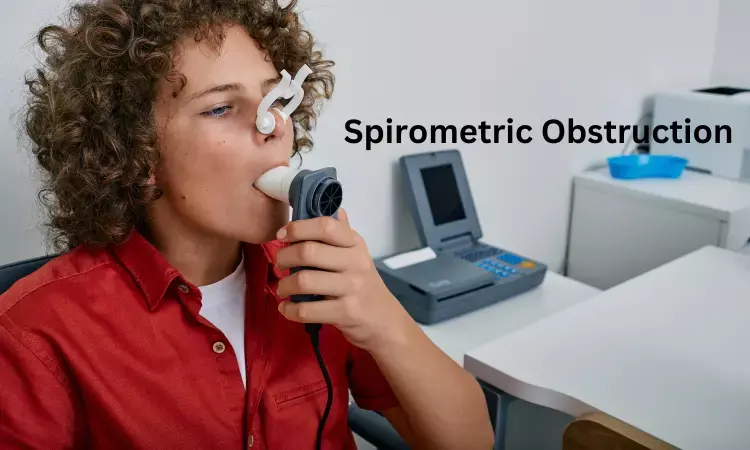- Home
- Medical news & Guidelines
- Anesthesiology
- Cardiology and CTVS
- Critical Care
- Dentistry
- Dermatology
- Diabetes and Endocrinology
- ENT
- Gastroenterology
- Medicine
- Nephrology
- Neurology
- Obstretics-Gynaecology
- Oncology
- Ophthalmology
- Orthopaedics
- Pediatrics-Neonatology
- Psychiatry
- Pulmonology
- Radiology
- Surgery
- Urology
- Laboratory Medicine
- Diet
- Nursing
- Paramedical
- Physiotherapy
- Health news
- Fact Check
- Bone Health Fact Check
- Brain Health Fact Check
- Cancer Related Fact Check
- Child Care Fact Check
- Dental and oral health fact check
- Diabetes and metabolic health fact check
- Diet and Nutrition Fact Check
- Eye and ENT Care Fact Check
- Fitness fact check
- Gut health fact check
- Heart health fact check
- Kidney health fact check
- Medical education fact check
- Men's health fact check
- Respiratory fact check
- Skin and hair care fact check
- Vaccine and Immunization fact check
- Women's health fact check
- AYUSH
- State News
- Andaman and Nicobar Islands
- Andhra Pradesh
- Arunachal Pradesh
- Assam
- Bihar
- Chandigarh
- Chattisgarh
- Dadra and Nagar Haveli
- Daman and Diu
- Delhi
- Goa
- Gujarat
- Haryana
- Himachal Pradesh
- Jammu & Kashmir
- Jharkhand
- Karnataka
- Kerala
- Ladakh
- Lakshadweep
- Madhya Pradesh
- Maharashtra
- Manipur
- Meghalaya
- Mizoram
- Nagaland
- Odisha
- Puducherry
- Punjab
- Rajasthan
- Sikkim
- Tamil Nadu
- Telangana
- Tripura
- Uttar Pradesh
- Uttrakhand
- West Bengal
- Medical Education
- Industry
Obstructive spirometric pattern mainly associated with respiratory mortality

Decreased lung function is associated with reduced ventilation and oxygen intake, especially during intense activity. In addition, reduced lung function could also affect other body functions such as sleep. Spirometry is the most common type of pulmonary function or breathing test. The test measures how much air one can breathe in and out of your lungs, as well as how easily and fast you can the blow the air out of your lungs.
Even though it is well known that reduced lung function is associated with increased mortality, but it is unclear how different spirometric patterns are related to specific deaths. The current study aimed to investigate these associations in a large general population cohort of Norwegian men.
The study found that spirometric obstruction was mainly related to pulmonary mortality and particularly Spirometric restriction was mainly related to extra-pulmonary mortality. The predominant decrease in forced expiratory volume in 1 second (FEV1) is strongly associated with respiratory mortality, especially noncancer-related deaths, according to study findings published in Respiratory Medicine.
The study included a total of 26,091 men aged 30–46 years from the Pneumoconiosis Survey of Western Norway conducted in 1988–1990 with follow-up on date and cause of death for 26 years. Cox proportional hazard models were used to estimate the association between baseline FEV1, FVC, obstructive (OSP) and restrictive spirometric pattern (RSP) (z-scores calculated according to GLI-2012 equations) and mortality (European 2012 shortlist classification (E−2012)), after adjustment for age, body mass index, smoking habits, and education.
The key findings of the study are
• In total, 2462 (9%) subjects died. A predominant reduction of FEV1 (and OSP) were associated with respiratory non-cancer (E−8) (HR for one unit FEV1 z-score decrease 2.29 (95% CI 1.90, 2.77) and lung cancer mortality (E−2.1.8) (1.27(1.12, 1.44)).
• A similar reduction of FEV1 and FVC (and RSP) were associated with diabetes (E−4.1) (FEV1 2.21(1.67, 2.92), FVC 2.41(1.75, 3.32)), cerebrovascular (E−7.3) (1.52(1.21, 1.91), 1.54(1.19, 1.98)), ischemic heart disease (E−7.1) (1.22(1.10, 1.35), 1.21(1.08, 1.36))
• The same was reported for neurological (E−6.3) (1.56(1.21, 2.01), 1.61(1.22, 2.13)), suicide (E−17.2) (1.37(1.13, 1.65), 1.29(1.04, 1.59)) and hematological cancer mortality (E−2.1.19–21) (1.29(1.05, 1.58), (1.26(1.00, 1.58)).
• No association was found between reduced lung function and mortality due to accidents, alcohol abuse, digestive and genitourinary cancer.
Researchers concluded that “Spirometric obstruction was mainly related to pulmonary mortality. Spirometric restriction was mainly related to extra-pulmonary mortality.”
Reference: Lucia Cestelli, Amund Gulsvik, Ane Johannessen, Knut Stavem, Rune Nielsen et al; Reduced lung function and cause-specific mortality: A population-based study of Norwegian men followed for 26 years; Resp. med September 28, 2023 DOI:https://doi.org/10.1016/j.rmed.2023.107421
MSc. Neuroscience
Niveditha Subramani a MSc. Neuroscience (Faculty of Medicine) graduate from University of Madras, Chennai. Ambitious in Neuro research having worked in motor diseases and neuron apoptosis is interested in more of new upcoming research and their advancement in field of medicine. She has an engrossed skill towards writing and her roles at Medical dialogue include Sr. Content writer. Her news covers new discoveries and updates in field of medicine. She can be reached at editorial@medicaldialogues.in
Dr Kamal Kant Kohli-MBBS, DTCD- a chest specialist with more than 30 years of practice and a flair for writing clinical articles, Dr Kamal Kant Kohli joined Medical Dialogues as a Chief Editor of Medical News. Besides writing articles, as an editor, he proofreads and verifies all the medical content published on Medical Dialogues including those coming from journals, studies,medical conferences,guidelines etc. Email: drkohli@medicaldialogues.in. Contact no. 011-43720751


